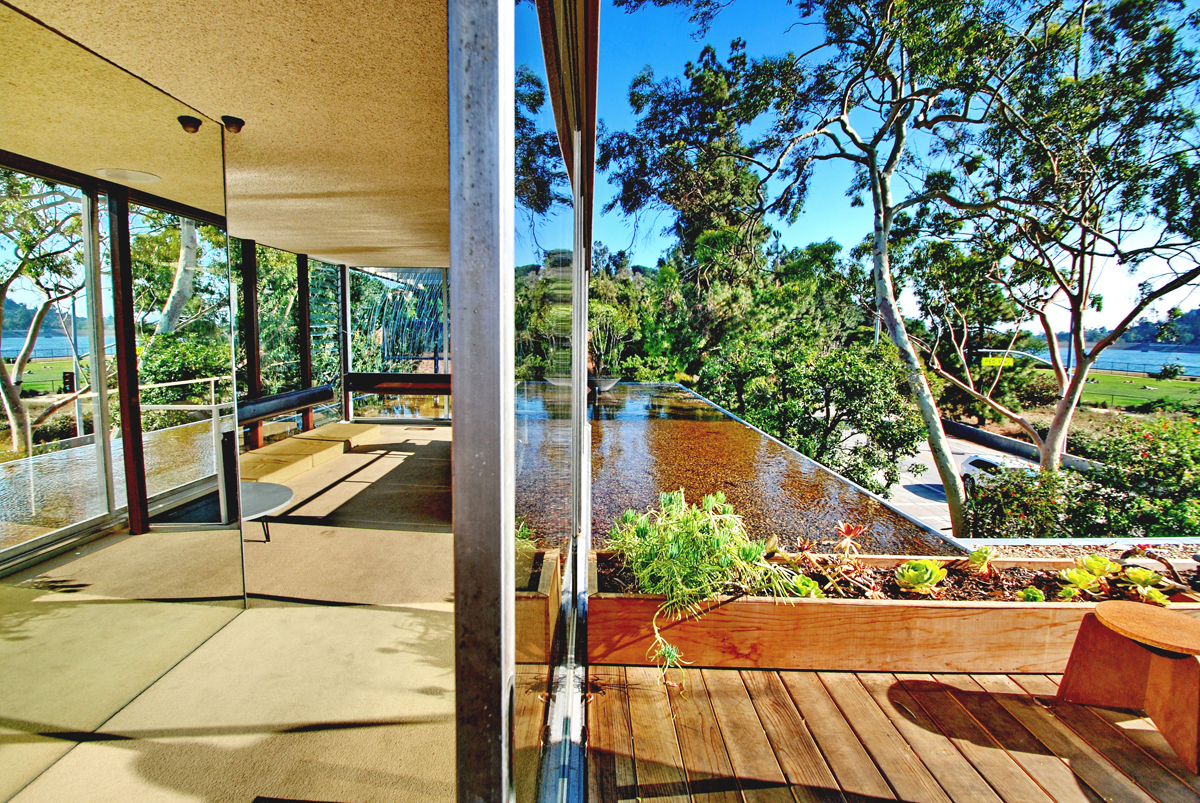Hit the Road - Page 4
Southern California
But wait. Isn't modern architecture about restraint?
Just so—and where better to delve into the origins of modern architecture than our next stop, Los Angeles? L.A. was one of the birthplaces of modern architecture, and several remarkable pioneering buildings can be visited.
 |
|
|
The first we'll visit, Frank Lloyd Wright's 1920 Hollyhock House, can't exactly be called restrained. One editor of Arts & Architecture magazine found a better word: "spellbinding." This house of textured concrete blocks evokes a Mayan temple. Its complex interweaving of living spaces both inside and out is a pleasure to explore.
But if you are looking for less is more, don't miss the compact Schindler House/MAK Center, also known as the Kings Road house, designed by Rudolph Schindler in 1921 with walls that opened completely to the outdoors, and a rooftop sleeping porch.
 |
|
|
Schindler was one of two Austrian architects who worked with Wright in L.A., then went out on their own. The other was Richard Neutra. For a time both lived together, with their wives, in the Kings Road.
"The distinction between indoors and outdoors will disappear," Schindler wrote, accurately predicting the influence this house would have on followers. The architects who worked for Joe Eichler were among many who took up this call. The house was so influential that one L.A. architect called it "the big-bang moment of modernism."
Another trend-setting home, Neutra's VDL House "exemplifies the dream of American modernism—an architecture with as much promise and optimism as any ever conceived," designer and author David Netto wrote. Originally built in 1932, it was rebuilt by Neutra and his son in 1963 after a fire. The home was "a laboratory for some of his most radical ideas," Netto wrote.
"What he achieved," architectural critic Nicolai Ouroussoff wrote of Neutra's design of the house, "was a well-tuned balance between machine and nature."
Looking for something just as historic but maybe not quite so significant? La Laguna Playground, also known as Dinosaur Park, in San Gabriel, is the sort of playground every town deserves.
It's filled with marvelous, quirky sculptures of sea serpents, whales, and concrete slides shaped like dragons created in 1965 by artist Benjamin Dominguez. It's nothing like the off-the-shelf plastic equipment that fills so many other playgrounds.
 |
|
|
Today the city brags that Dinosaur Park was voted one of the nine "coolest playgrounds" in America. But just over a decade ago officials planned to demolish it. Friends of La Laguna fought the plan. Today it's a state landmark. Bask in the park's art and history while your kids go wild.
It's been a long trip, no? And traffic in the L.A. basin gets wearying. Let's head for the desert—but not before touring a town that seems frozen in time in a very good way.
Feel your stress melt away as you exit the 10 onto Indian Hill Boulevard to discover Claremont, a low-key town with a charming downtown and seven separate institutions of learning that are part of the Claremont Colleges.
Thanks to the colleges, and to the presence of artist and arts entrepreneur Millard Sheets, Claremont became a center of arts, ceramics, and design in the mid-century. The colleges and the town are filled with mid-century modern buildings, including homes; and with paintings, sculptures, and friezes in banks and office buildings. Some of this art, which includes large mosaic murals by Sheets and by Susan Hertel, decorates exteriors.
The group Claremont Heritage has aptly called their town " a modernist Mecca just now being discovered."




